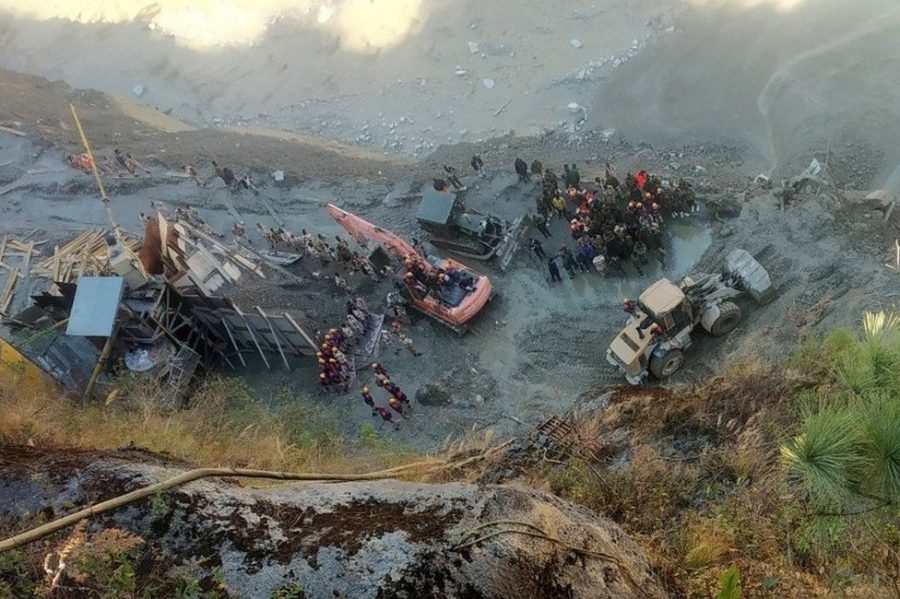Glacier Collapse in India Kills 26
February 9, 2021
The Nanda Devi glacier in the Indian state of Uttarakhand burst on Feb. 7, causing flash floods downstream that killed 26 people and left hundreds missing. The floods destroyed two hydroelectric projects in Uttarakhand and forced mass evacuations for those who lived downstream.
“Uttarakhand has witnessed a terrible disaster,” said Chief Minister Trivendra Singh Rawat.
The flash flood swept through gorges and obliterated everything in its path, including buildings and trees. The district of Chamoli was heavily impacted by the flood rushing down through the Dhauli Ganga river valley.
“I saw black liquid flowing from the Nanda Devi mountainside—down with a lot of noise—as if a volcano had erupted,” said Ratan Singh Rana, a resident of the nearby village of Rana.
The floods brought ice, boulders, and dirt with them, blocking areas with rubble and making it difficult for rescuers to reach the impacted areas. Emergency responders were airlifted from the capital city of New Delhi to the affected area, and arrived on Feb. 8.
“Our special focus is on rescuing the workers trapped in the tunnels,” said Rawat. Workers at the Rishiganga hydroelectric dam had very little time to react to the incoming flood.
There was no time for anyone to issue a warning, and the avalanche swept through the dam, completely destroying it. 20 to 30 of the 35 personnel working at the plant are believed to be missing. At a larger plant downstream, 176 workers were building the Tapovan Vishnugad hydroelectric plant, and 30 workers are believed to be trapped in one of the two tunnels.
“This incident, which happened in the Himalayas at Rishiganga, is a matter of both concern and warning,” said Uma Bharti, a former minister for water resources. The areas on which both hydroelectric dams were located were extremely susceptible to change, and they were believed to be far too sensitive to be built upon.
While it is still too early to determine the exact cause of the flash floods and avalanche, most believe they were caused by a climate change-related glacier burst. Due to increasing temperatures, Himalayan glaciers have been losing ice faster than ever before, losing half a meter of ice each year. Glaciers can contain pockets of liquid water, which spill out when part of a glacier breaks out. This could likely have triggered the disaster that occurred on Feb. 7.
However, a report by the Indian Institute of Remote Sensing indicates that the cause of the disaster could also be a landslide, which triggered an avalanche of fresh snow. The avalanche could have blocked the river and created a temporary reservoir, leading to the rapid generation of 2 to 3 million cubic meters of water. The cause of the disaster will remain unknown until ground teams manage to gather evidence at the source.
Photo courtesy of BBC.COM

